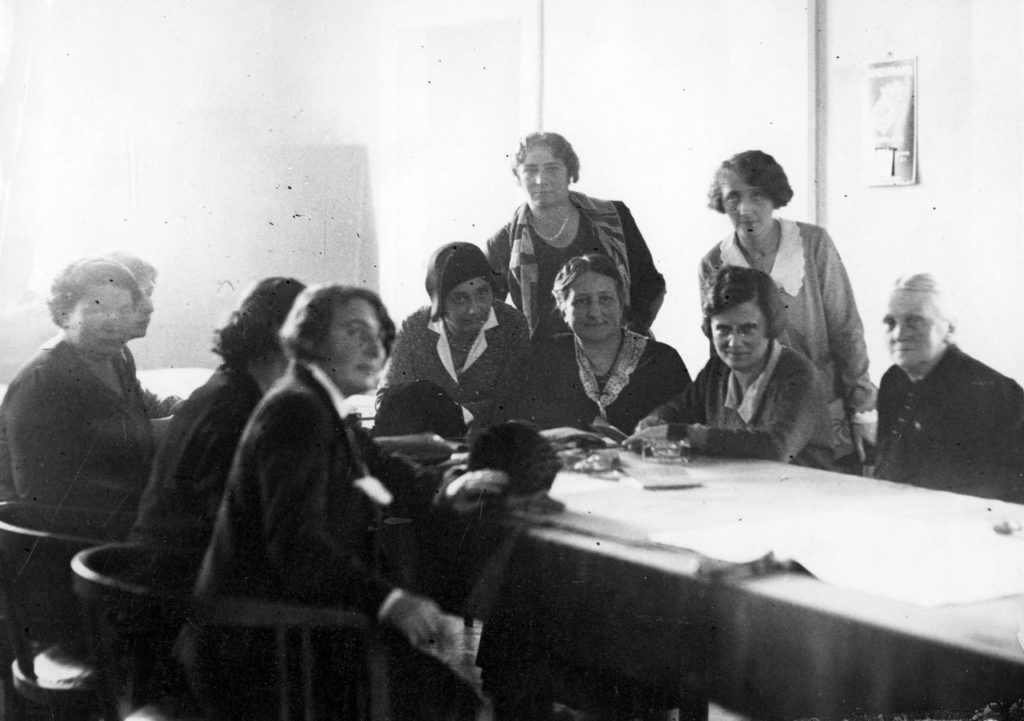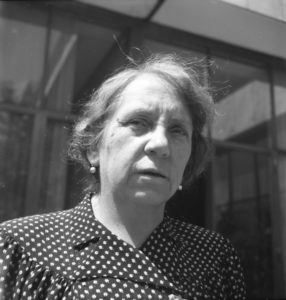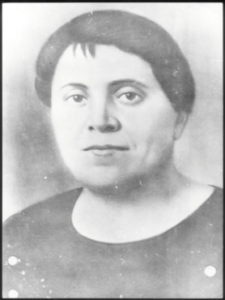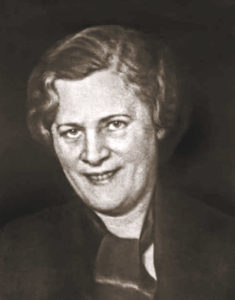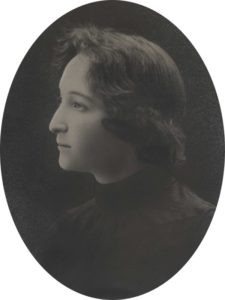by Zhanna Popova and Veronika Helfert
Illustration: A group of female members of the Sejm from the Nonpartisan Bloc for Cooperation with the Government, including Janina Kirtiklisowa, Eugenia Waśniewska, Zofia Moraczewska, Maria Jaworska, and Halina Jaroszewiczowa (1930) via Narodowe Archiwum Cyfrowe
Biography is among the canonical genres of historical writing. It is also one particularly riddled with clichés: too often authors put their protagonists on a pedestal instead of providing a complex, nuanced picture of them as personalities and historical actors. In response to this, recent historiography, especially the feminist historiography, has consistently problematised biography writing. Clare Hemmings, for example, thought extensively about some of the critical issues involved in writing about “larger-than-life anarchist activist and political thinker” Emma Goldman. There are tensions between the historical subject’s own autobiographical enterprise and the archival, personal, and public testimonies. There is a complex mix of emotions that taint biographical writing, ranging from fascination and uncritical admiration to perceived intimacy, which the biographer needs to distance herself from. In short, the relationship between a historical figure and a writer is never a neutral one.[1]
Feminists and historians interested in women’s and gender history have been researching the past and looking for women as historical actors since the nineteenth century.[2] The motivations for this were and are manifold: female socialists have been looking for and presenting them as role models, like the Austrian social democrat Emma Adler who portrayed French revolutionaries,[3] or the many activists and academics in state-socialist countries who published about and popularised socialist and communist women of the past. Feminist historians putting women in the limelight were also creating a counter-narrative to the “history of great men” by writing life stories of important but unknown women.
A researcher who sets out to follow activists puts herself in a complicated position in terms of sources used (check out our previous blog post series on finding women in the sources below). Documents pertaining to lives of individuals tend to be scattered, hard to access, incomplete and particularly partial. While public institutions and organisations often offer voluminous and well-preserved records, only some individuals are preoccupied with creating well-inventoried and curated personal archives. Identifying and locating sources sufficient for constructing life stories of women who were marginalised often proves challenging. Although many women involved in party organisations or women’s movements were acutely aware of the importance of their activity and preserved extensive personal records, engaging with archives of well-known functionaries and feminist intellectuals has its own challenges. A recent study on the German women’s rights activist, Käthe Schirmacher, explored these pitfalls. One such problem, for instance, is the continuous autobiographical “overwriting” that Schirmacher engaged in throughout her life, re-interpreting, omitting, or including facts into her own life story depending on her changing views[4]. Rank and file female labour activists often did not have the time and resources to systematically preserve records.
Despite these difficulties, research on individual women activists can be rewarding. ZARAH as a project evokes the names of two women: the Turkish-Greek trade unionist Zehra Kosova and the Hungarian peasant women’s right campaigner Sára Rokon Tóth. Activists – their lives, their names, their actions, their writings – are of interest to us. The biographical miniatures we will present in the upcoming blog series show why an engagement with individuals can be a worthwhile endeavour. Researchers of the ZARAH Team will zoom in on individual women labour activists who lived and worked in Eastern and Central Europe, also reflecting on the specificities of putting them centre stage in a historical investigation. Even without pursuing a fully-fledged project of biographical writing, historians of labour activism, as we show, can profit from focusing on individuals.
First, focusing on an individual gives the historian a possibility to see them as an acting, thinking, and feeling person. While the tendency to heroise has been (and continues to be) a problem in biographies of women, and especially women activists, the acknowledgment of the often inconsistent and conflicting facets of their personalities and activities shining through when reading of sources carefully can provide a counterpoint to such heroising narratives.
Second, a researcher who puts female labour activist’s actions in the limelight of her study is rewarded with a more inclusive and more complex understanding of activism. Activists often had to make complicated choices in order to be able to pursue their agendas as women and workers. Repeatedly, this meant combining an engagement in male-dominated trade unions with participation in middle-class dominated women’s organisations with the goal of following their class and gender interests simultaneously. A focus on individuals also shows that repertoires of activism could be extremely expansive. They included not only traditional collective action, but a wide variety of activities: smuggling and distributing illegal press and literature, giving musical soirées where singing was intertwined with agitation, organising childcare, creating schools for young women workers or campaigning for consumer boycotts.
Third, following a life story vividly highlights how activists and activism changed over time. Changing contexts meant changing responses to them: evolution of causes for mobilisations, disruptions of the repertoire of contention or access to long-sought positions of power within governments and trade unions. A life story also puts at the forefront not only the policy-related consequences of activism, such as change of laws or creation of new institutions, but also personal consequences of activist engagement, which ranged from empowerment to complete disillusionment and despair.
Finally, interest in a particular activist can also enrich one’s own research perspective. In dealing with a single historical person, their networks might come to the surface, altering the image of male dominated organisations like trade unions. Tracing the activities and writings of a woman may suddenly reveal a range of other women, as addressees of letters, as common speakers at events, as companions in photographs and other personal accounts. Reading their publications may offer insights in a broad range of topics and themes highlighting the fact that women workers had multifaceted loyalties. Studying concrete persons can reveal the connections between different movements (i.e. women, labour and national movements) and might provoke a shift in understanding interconnections between them.
In the coming weeks, ZARAH researchers will give insights into their research projects, introduce key women militants from Eastern Europe involved in different forms of labour related activism and show the perspectives opening up when following their traces.
References:
[1] Clare Hemmings, Considering Emma Goldman: Feminist Political Ambivalence & the Imaginative Archive (Durham: Duke University Press, 2018), 1-14.
[2] Gabriella Hauch, “‘Wir die wir viele Geschichten haben…’ Zur Genese der historischen Frauenforschung im gesellschaftlichen und wissenschaftlichen Kontext,” [‘We who have many stories…’ On the genesis of historical women’s studies in a social and scholarly context] in Frauen- und Geschlechtergeschichte: Positionen und Perspektiven [Women’s and Gender History: Positions and Perspectives], ed. Johanna Gehmacher and Maria Mesner (Innsbruck: Studienverlag, 2003), 21–35.
[3] Emma Adler, Die berühmten Frauen der Französischen Revolution [The famous women of the French Revolution] (Vienna: C. W. Stern, 1906).
[4] Johanna Gehmacher, Elisa Heinrich and Corinna Oesch, Käthe Schirmacher: Agitation und autobiografische Praxis zwischen radikaler Frauenbewegung und völkischer Politik [Käthe Schirmacher: Agitation and autobiographical practice between radical women’s movement and völkisch politics] (Vienna: Böhlau, 2018), 513-528. Open access: https://www.vr-elibrary.de/doi/book/10.7767/9783205208280.

